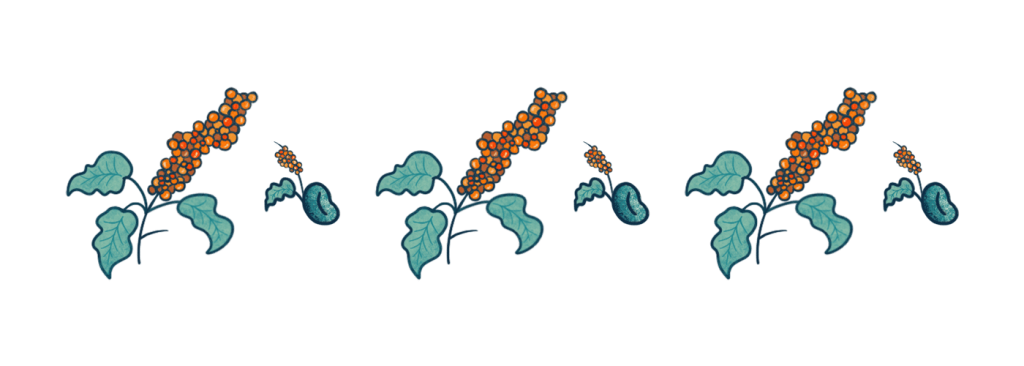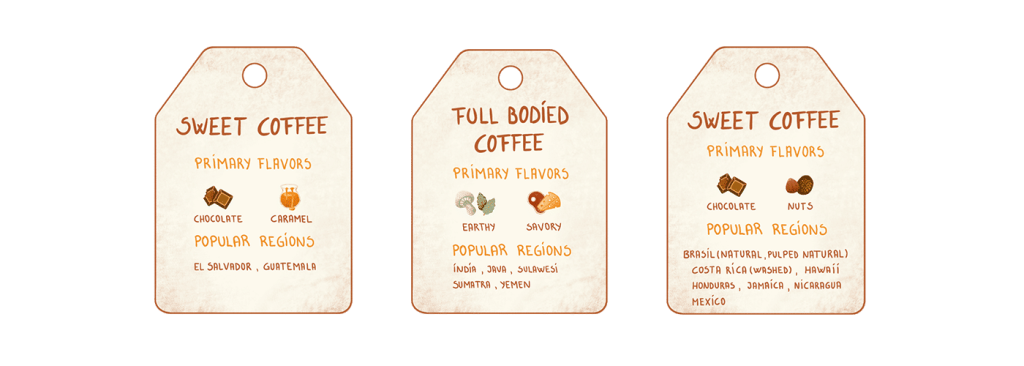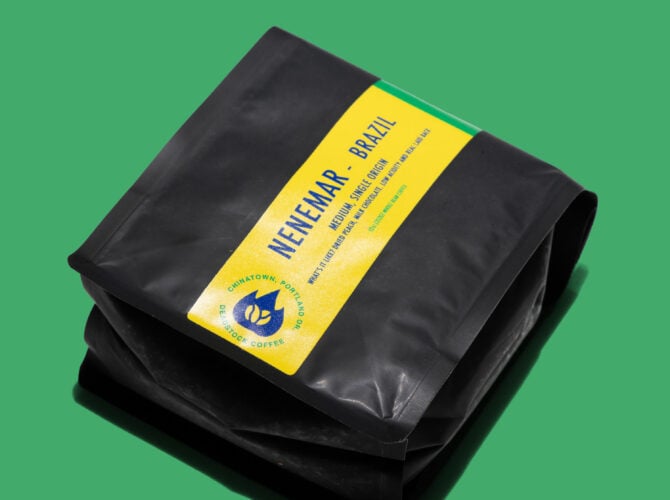A Home Barista Guide to Coffee Seasonality
Our handy palate-pleasing calendar hacks will help you keep a handle on the ever-changing seasonality of the coffees in your hopper.
Words by Ever Meister, Illustrations by Sara Geci
___

One thing that wine definitely has over coffee is the fact that it’s not a prisoner of seasonality: Of course the grapes themselves and the winemaking process has its time and place over the course of a year, but unlike coffee, you can find a good bottle of Chilean Malbec, California Chardonnay, or Italian Barbera any time of the year. Coffee, on the other hand, is more like fresh produce than preserved food or drink—as such, every coffee has its season, and every coffee tastes best as near to that season as possible.
This can be maddening for any coffee lover who is chasing their favorite coffee profiles. What happens when you fall in love with a tangeriney Colombian coffee only to find that it’s sold out and won’t be restocked until next harvest? What if you’re mixing a blend and you suddenly run short of those big-body Brazilian chocolate bass notes?
Understanding coffee’s seasonality and the profiles that fit each season can be a huge help in navigating the beans available at your local cafe or on your favorite roaster’s website. Here we’ve devised something like a few handy palate-pleasing calendar hacks for you, based on time of year, geographical location, and commonly found flavor profiles of some of the coffees grown ‘round the world.
Think in semesters.

Coffees from the Northern Hemisphere (Mexico, Central America, northern Colombia, Ethiopia, Kenya, parts of Indonesia) have different peak harvest seasons than those in the Southern Hemisphere (Brazil, southern Colombia, Peru, Tanzania, Burundi, Rwanda, Papua New Guinea), which means that once the one Hemi cycles “out” the other should start to come up in its place. Knowing what times of year coffees from each are available can help you start to pencil in your buying plan: You should know to look for what when. (Note that some places have multiple harvests based on their Equatorial position: Colombian coffees, for instance, are available year-round because there are main harvests both north and south of that global belt line.)
From late winter until early summer, plan to buy Northern Hemisphere coffees.
From late summer to early winter, look for coffees from below the Equator.
Note: Our Map above is a general representation of coffee-growing areas, and is not meant to be exhaustive. Cafe Imports released an incredibly-detailed map that you should check out.
Find your flavor.

Knowing what you like in a coffee and knowing where to find those flavors are key to your year-round espresso dialing-in enjoyment. Of course, as with any agricultural product, your mileage may vary: If there are flavor notes on a bag, we recommend you trust them at least for a little bit of guidance. (For instance, if something is described as “chocolate, nut, nougat, caramel,” don’t go into those beans expecting to find a big juicy fruit experience.)

Fruity coffees that taste like jam, berries, raisins:Brazil (natural), Democratic Republic of Congo, Ethiopia (natural), Malawi, Papua New Guinea, Sulawesi, Yemen
Fruity coffees that taste like stone fruit and sweet citrus:Colombia, Costa Rica (honey), Ecuador, El Salvador, Ethiopia (washed), Guatemala, Peru
Fruity coffees that taste like tropical fruit and tart citrus:Burundi, Colombia, Ethiopia (washed), Kenya, Rwanda

Sweet coffees that are chocolaty and nutty:Brazil (natural, pulped natural), Costa Rica (washed), Hawaii, Honduras, Jamaica, Mexico, Nicaragua
Sweet coffees that are chocolaty and caramelly:El Salvador, Guatemala,
Earthy coffees that are savory and full-bodied:India, Java, Sulawesi, Sumatra, Yemen
Travel the world with your palate.
Not sure what the coffee from a particular place tastes like? Baffled by the descriptors on a bag or provided by a barista? Encountered an origin you’ve never heard of? Don’t fear the flavor—just give it a try. After all, coffee is a fairly inexpensive taste adventure, and the potential return on investment is very high—you might just stumble upon a dazzling profile you never knew was possible, or unlocked the key to your morning cappuccino. After all, the worst thing that can happen is you wind up with a bag of beans you don’t prefer, and there’s almost always a friend, neighbor, or fellow coffee nerd nearby who would be more than happy to take the rest off your hands.

Take notes.
To avoid winding up in a rut where you’re passing off your unwanted coffee to everyfriend, neighbor, or fellow coffee nerd you can find, make sure that you keep some notes about the coffees you try, what they tasted and performed like, and, of course, whether or not you like them. You can even write them into a date book or a calendar, so that next year you can refer back to the chronology of your caffeinated year and make plans for what you’re looking to buy each coming month.
Be sure to mark down not only when and where you bought the coffee, but also the roast date, the country of origin, the roaster’s name and location, your espresso specs (how much coffee you used to brew how much liquid, in how much time), and, naturally, the flavors you get out of the shots.
—
Got any other tips for navigating the coffee seasons? Leave them below!
☕️






